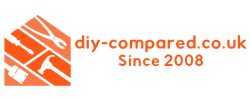Plastering
Getting Started With Plaster
Plaster is a building material primarily used in the creation of walls, ceilings, and decorative molded elements. It is a very simple material made up of powdered mineral and a little bit of water. The most common types of plaster are cement plaster, lime plaster, and gypsum plaster (also called plaster of Paris). Each plaster type has its own characteristics; a plasterer selects the type of plaster to be used based upon what the specific application and on what the finished project will look like.
The right tools for the job
To work successfully with plaster a few basic tools are needed. Anyone attempting plastering for the first time should purchase these tools first and become familiar with their use. The tools listed here can be purchased at any DIY or home improvement shop, hardware store, and even well-stocked arts and crafts supply shops.
• Mixing tub – A sturdy tub or large bucket that is only used for mixing plaster. Having a dedicated container for mixing will prevent the accidental mixing of non-plaster elements in with your plaster compound.
• Trowel – This should be made of carbon or stainless steel.
• Plastering float – This is a lightweight trowel used to finish a plastered surface.
• Corner trowel – Produces sharp, precise corners.
• Level and straight edge – Tells you if a surface is level and if edges are straight. Sometimes sold as two separate tools.
• Hawk – Also called a hand board, this helps you apply plaster in broad strokes.
• Mixing stick or electric mixer – Use these to achieve a smooth, even consistency when mixing your plaster compound. It’s best to purchase an electric mixer that will only be used for plaster-related applications.
Used correctly and cared for properly plaster tools should last for several years. However, as you learn which particular tools you like best you may purchase replacements for some of these initial items.
Getting ready to plaster
Before you begin any plastering job, inspect your tools to make sure they are clean and free of any old, dried plaster. Good plaster is free from debris; weaknesses can be introduced by the presence of foreign particles, including dry plaster.
Make sure that you set aside plenty of time to work. Once the plaster is mixed it has to be applied while still wet. If the plaster dries before it has been used or starts to dry out too quickly, you’ll end up wasting materials and may have a difficult time continuing. Also, make sure that you account for any time necessary between applications. Plaster will take several hours to dry completely so plan ahead if you need to finish one application before you begin another.
Important tips to keep in mind
First time DIY plasterers are often highly concerned with achieving a smooth, uniform surface when plastering. Flat, smooth, even surfaces are undoubtedly the goal but it is actually more important to get the plaster onto the surface first. Once dried, the plastered surface can be changed quite a bit. Sanding and buffing will help even out any trouble spots and rough portions will buff out with a little effort.
Once one layer of plaster has been applied, take some time to clean all your tools before putting them away. Wet plaster is easier to remove from DIY tools than dry. Rinse them off under a garden hose or in a utility sink. Never pour wet plaster down a drain. If you find that you have left over plastering compound, pour it into a disposable container and allow it to dry completely. Break the dry plaster into smaller pieces and then throw it away.
Any home improvement or DIY enthusiast should know a few things about plastering and the tools required for this job. This simple material can be challenging to work with though with a little practice you’ll soon see the many ways that plaster can be used in and around the home.
